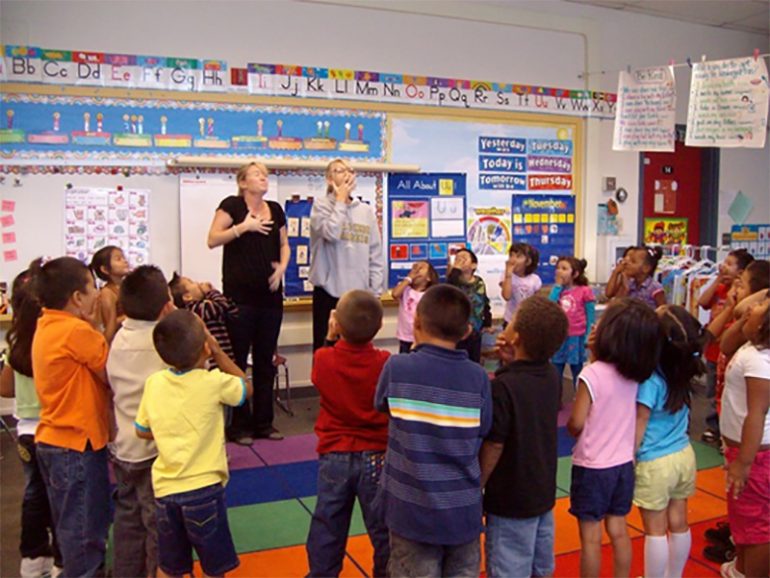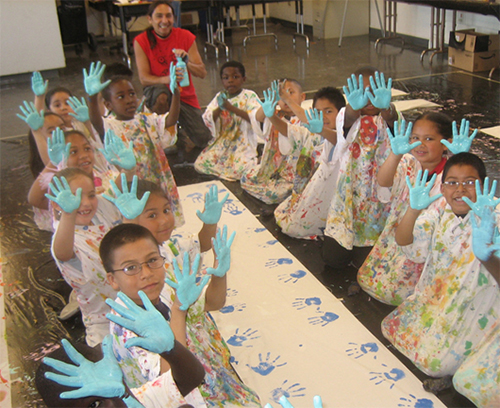Art can be almost anything. It can be a source of beauty and inspiration or the match that can lit up the flames of a revolution. It can be something that plays on the greatest fears of men. It can be in any form: a drawing of a butterfly, a painting of a smiling woman, a short poem written down by an inspired author, a statue standing tall and proud to welcome visitors from faraway lands or a song composed by the most soulful musician. It can also be as something ordinary as a playground for children or as though-provoking as effigy of your leaders.
Well, whatever form art takes, if art can be anything anyone wants it to be, then it follows that art can also be used to teach kids.
Why Use Art in Teaching
According to this article from the TeachingEnglish.org there are several benefits from using art in teaching.
- Responding to art can be very stimulating and can lead onto a great variety of activities. This is true, especially because kids like activities other than the usual boring lectures. A teacher can do lots of other things to make the class interested in learning.
- Using art provides a useful change of pace.
- Incorporating art into the class or syllabus can take the students out of the classroom and encourage them to use their language skills in the real world. It gives them a chance to encounter new or foreign words, increasing their vocabulary.
- Thinking about or even creating art can be very motivating. In class there are students who usually restrict themselves from talking for fear of saying something wrong. This will remove that barrier and and at the same time give them more space to be expressive and creative and learn.
- Responding to art has the potential to develop students’ creative and critical thinking skills. It lets them think harder. For example: trying to describe how an artist’s experiences over the course of his lifetime reflect on the art he made.
The article goes on to recognize that there might also be problems with using art as a teaching material, such as students who don’t like certain art. But there are ways to solve these problems so that all the students would be willing to partake in the lessons.
How to Use Art in Teaching
Okay, so there are benefits for using art. Now how do we use art? Out on the internet, there are a lot of sites that can tell you. Its just a matter of a simple Google search. Here’s some examples:
- In Math
There are plenty of ways to use art in a math class. Mathematics is naturally related to Art. Geometric shapes are used in art all the time. The golden ratio exist in art and in nature and the Greeks love it so much it exist in almost all their art and architecture.
If you are a teacher that’s teaching kids (who aren’t old enough to know what geometry is) how to count, you can still use art of colorful images to stimulate their interest so they won’t feel bored of the lesson. If your teaching them how to identify shapes you can ask them to draw these shapes and create objects with said shapes.
- In Science
Science is related to art just as much as Math is. It is a branch of knowledge that deals with facts and plenty of art draws inspiration from facts. There are plenty of ways to use art to teach science, from making leaf prints to teaching students how to mix colors. You can also show class art depicting natural events and discuss the science behind such events.
- In History
Historical events depicted in paintings or statues are very common. Showing those to the class could stimulate their interest in the lesson and provide good discussion.
Conclusion
It isn’t hard to use art to teach, it only ask you to be a bit creative with it. Art after all encompasses many things like facts, numbers and history. Not only will you be able to increase the student’s interest in your class, you can stimulate their creativity and other skills, helping them learn better. Art is an effective tool and teachers should learn to use it.
Photo Attribution:
Featured and 1st image by An ongoing class, <a href=”https://cdn.theconversation.com/files/85600/width754/image-20150618-23223-1ls7zd7.jpg”>via theconversation.com</a>
2nd image by Handprinting in class, <a href=”https://cdn.theconversation.com/files/83468/width926/image-20150601-15234-1j39n89.jpg”>via theconversation.com</a>

